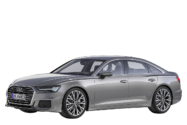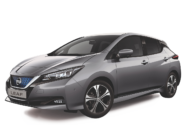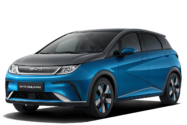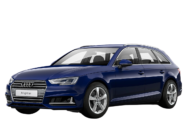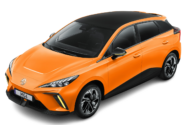Glossary
-
BAB130 Highway
A test cycle for chassis dynamometer emissions testing, developed by ADAC in Germany as part of its EcoTest programme. BAB is short for Bundesautobahn (federal highway) and 130 km/h is the maximum speed. Referred to by Green NCAP as the Highway test or Motorway test.
-
BEV
Battery Electric Vehicle. A vehicle which uses electricity as its only source of energy.
-
CH4
Methane is the main component in natural gas and is a strong contributor to the greenhouse effect.
-
Charge-Depleting Mode
A mode of driving where a PHEV can rely on the electrical energy stored in its battery for power. Charge-depleting mode may not necessarily be a ‘pure electric’ mode as the combustion engine may be used to provide cabin heating or to augment power in high-load situations.
-
Charge-Sustaining Mode
A mode of driving where a PHEV relies primarily on its combustion engine for power and for maintain the state of charge of the battery.
-
CO
Carbon Monoxide, a pollutant gas.
-
CO2
Carbon Dioxide, a greenhouse gas.
-
Cold Ambient Test (CAT)
WLTC+ laboratory test performed on chassis dynamometer at –7°C.
-
Diesel B7
Diesel based fuel with added biocomponents of up to 7%.
-
DPF
Diesel Particulate Filter, an exhaust after-treatment on diesel vehicles which reduces emissions of particulate matter.
-
DPF regeneration
The process of oxidising (burning) the soot accumulated in the Diesel Particulate Filter in order to convert it to gases and restore the filtering function before the filter’s capacity is reached. The process is activated under suitable driving conditions or through deliberate engine management measures.
-
Driving Range
Driving Range is the estimated distance one can drive with the vehicle starting the journey at full energy storage.
-
Driving Resistance
Driving Resistance is the sum of forces acting against the motion of a vehicle (drivetrain losses, tyre rolling drag and aerodynamic drag).
-
E10
Petrol based fuel containing unleaded petrol and up to 10% renewable ethanol.
-
E85
Fuel blend nominally consisting of 85% renewable ethanol and 15% unleaded petrol.
-
EAER
Equivalent All-Electric Range. A value calculated from test measurements of CO2 in the WLTP for PHEV, which indicates the distance the vehicle could travel if it relied solely on battery power.
-
Euro 6
European legislation introduced in 2014 (for new cars, 2015 for all cars) with tighter control on vehicle emissions than previous European standards.
-
Euro 6b
A level of emissions legislation applying the limit values of Euro 6 to cars tested using the NEDC.
-
Euro 6d
A level of emissions legislation applying the limit values of Euro 6 to cars tested using the WLTC and RDE, with tighter control on the NOx allowed during the RDE than used for Euro 6d-Temp.
-
Euro 6d-Temp
A level of emissions legislation applying the limit values of Euro 6 to cars tested using the WLTC and RDE.
-
GPF
Gasoline Particulate Filter, an exhaust after-treatment on petrol (gasoline) vehicles which reduces emissions of particulate matter.
-
Greenhouse Gases
Greenhouse gas emissions (GHG) are the emissions of any gas that has the property of absorbing infrared radiation (net heat energy) emitted from Earth’s surface and reradiating it back to Earth’s surface, thus contributing to the greenhouse effect. Carbon dioxide (CO2), methane (CH4), and water vapour are the most important greenhouse gases. Due to its very high global warming potential, nitrous oxide’s (N2O) emissions are also considered. The greenhouse gas emissions are usually given in CO2-equivalent (CO2-eq) covering the sum of CO2, CH4 and N2O according to their contribution to global warming for a time horizon of 100 years (GWP 100).
-
HC
Hydrocarbons, a collective term for a variety of pollutant gases consisting of hydro-carbon chemical compounds.
-
HEV
Hybrid Electric Vehicle. A vehicle which uses a combination fossil fuels and electric power as its source of energy.
-
ICE
Internal Combustion Engine. A thermal engine in which the combustion of a fuel occurs with an oxidizer (usually air) in a combustion chamber that is an integral part of the working fluid flow circuit. In an ICE, a part of the chemical energy stored in the fuel is turned into mechanical work.
-
Life Cycle Assessment
Life Cycle Assessment (LCA) is a method to estimate the overall environmental impact of a vehicle over its total life cycle. Green NCAP’s LCA assesses the greenhouse gas emissions and the primary energy demand during the various stages in the life cycle of different passenger vehicles. The stages include: the extraction of raw materials; production and distribution of the vehicle and its energy source; product use; and, finally, recycling and disposal. LCA allows a comparison of different cars offering the same transportation, covering the same travelling distance over the same period, and identifies those life cycle phases having the greatest impact on CO2 emissions.
For more details, see LCA Explained
-
MHEV
Mild Hybrid Electric Vehicle. A vehicle which uses an electric motor to provide a small/modest amount of additional power and torque in addition to that provided by an internal combustion engine.
-
N2O
Nitrous Oxide, commonly known as 'laughing gas' is a powerful greenhouse gas which can be found in significant quantities in the exhaust of some motor vehicles.
-
NEDC
New European Drive Cycle. The laboratory test cycle used in emissions tests using a chassis dynamometer. This was the drive-cycle used to demonstrate compliance with Euro 6 emissions standards for cars approved to Euro 6b.
-
NH3
Ammonia is a compound of nitrogen and hydrogen and is formed in the emission control systems of gasoline and diesel vehicles. Ammonia emissions can be a threat to urban air quality.
-
NMHC
Non-methane hydrocarbon, a collective term for a variety of pollutant gases consisting of hydro-carbon chemical compounds, excluding methane (CH4).
-
NO2
Nitrogen Dioxide is a gaseous air pollutant composed of nitrogen and oxygen.
-
NOx
A collective term for oxides of nitrogen, specifically NO and NO2.
-
PEMS
Portable Emissions Measuring System. Equipment used to measure vehicle emissions while the car is driving. May also be used to refer to a test making use of this equipment.
-
PEMS+
An enhanced regulatory RDE test procedure used by Green NCAP to test real-world environmental performance.
-
PHEV
Plug-in Hybrid Electric Vehicle. A hybrid vehicle in which the battery can be charged from an external electrical source.
-
PM
Particulate Mass. The mass of the particulate emitted during the emissions test.
-
PN
Particulate Number. The number of particles emitted during an emissions test.
-
Pollutant Emissions
Gases and particulate matter which cause harm to health and the environment.
-
Primary Energy Demand
Primary Energy Demand (PED) is the sum of all primary energy extracted from nature to provide the transportation, covering coal, oil, natural gas, hydro energy, wind, waste, solar and nuclear energy. The unit is kWh or MWh.
For more details, see LCA Explained
-
RDE
Real Driving Emissions. A regulatory emissions test which is conducted while the car is being driven under real-world conditions (ambient temperature, altitude, slopes).
-
Regeneration
DPF/GPF Regeneration: the process by which a particulate filter is unblocked using high temperatures to burn away the particulate matter trapped inside.
-
Robustness
The ability of the exhaust after treatment system to perform efficiently under a wide variety of operating conditions.
-
SCR
Selective Catalyst Reduction. A technology which injects a reducing agent (typically automotive-grade urea) into the exhaust stream of diesel cars.
-
SoC
State of charge. The term describes the level of charge of an electric battery relative to its capacity.
-
WLTC
Worldwide-harmonised Light-duty-vehicle Test Cycle. A revised regulatory laboratory test cycle used in emissions tests using a chassis dynamometer. This is the drive-cycle used to demonstrate compliance with Euro 6 emissions standards for cars approved to Euro 6d-temp. Green NCAP performs the test several times, under different conditions. In the cold test, the car is started from cold and in the warm test, it is first warmed to its standard operating temperature.
For more details, see Test Procedures
-
WLTC+
The regulatory WLTC test custom-tailored for Green NCAP assessment.
For more details, see Test Procedures
-
WLTC+ CAT
WLTC+ laboratory test performed at -7°C ambient temperature with the vehicle soaked at -7°C.
-
WLTC+ Cold Test
WLTC+ laboratory test performed with cold engine start on chassis dynamometer at 23°C ambient temperature.
-
WLTC+ Warm Test
WLTC+ laboratory test performed with warm engine start on chassis dynamometer at 23°C ambient temperature.





















